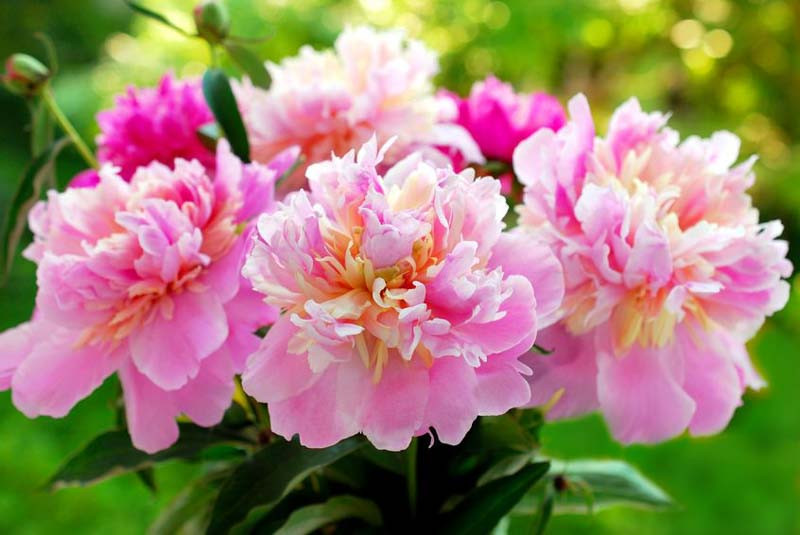Paeonia (Peony)
The Peony, or Paeonia, is a beloved perennial known for its large, showy blooms and lush foliage, making it a cornerstone in many gardens.
Origin and Species: Peonies are native to various regions, including Asia, Europe, and Western North America. This genus encompasses approximately 33 species, falling into two primary categories: herbaceous perennials and deciduous shrubs.
Types and Varieties: Peony plants are broadly categorized into herbaceous, tree, and intersectional types. Herbaceous peonies die back to the ground each winter, while tree peonies retain a woody structure year-round. Intersectional peonies, or Itoh hybrids, are a cross between the two, offering the best of both worlds.
Flowers and Blooms: The charm of the peony lies in its large, often fragrant flowers that appear in late spring to early summer. They can vary in color from pink, red, white, yellow, and coral. The flowers, ranging from 2 to 12 inches in diameter, can be single, semi-double, or double, with the latter being especially popular for their full, luxurious appearance.
Growth and Care: Peonies thrive in well-drained soil and full sun to partial shade. They are hardy in USDA zones 3-9 and prefer a temperate climate. They require minimal maintenance but benefit from occasional fertilization and deadheading after blooming. Master the art of growing and caring for peonies.
Longevity and Uses: One of the most remarkable aspects of peonies is their longevity; they can live and thrive for decades in the same location. They are widely used in landscaping for their aesthetic appeal and are prized as cut flowers due to their beauty and long vase life.
Symbolism Peonies carry rich symbolic meanings, often associated with romance, prosperity, and good fortune. They are also known for their medicinal properties in traditional Chinese medicine.

